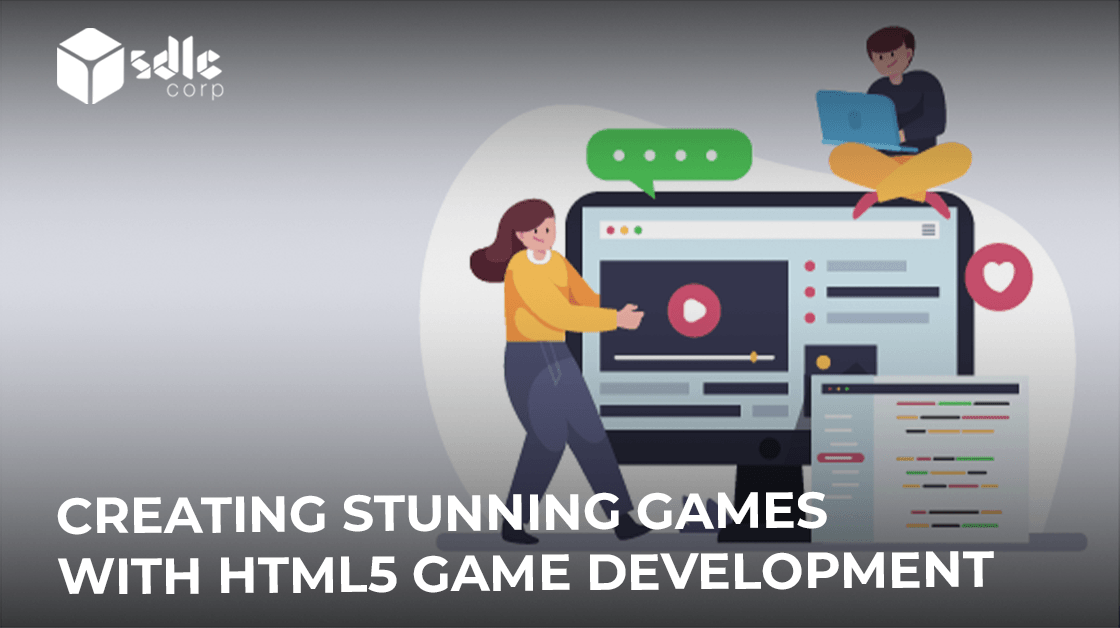CREATING STUNNING GAMES WITH HTML5
HTML5 game development has transformed the gaming business by providing a new platform for developers to produce visually appealing games. HTML5 is a markup language used on the World Wide Web to arrange and deliver content. HTML5 has evolved into a powerful platform for game creation with the advent of different APIs and packages.
HTML5 game creation has various advantages over older game development platforms. HTML5 games are cross-platform, which means they can run on a variety of platforms and operating systems, such as desktop computers, laptop computers, smartphones, and tablets. Furthermore, HTML5 games do not require any downloads or installations because they are played straight in the browser. This makes them more accessible to players and removes the need for complicated installation procedures.
The HTML5 games are not only convenient, but also visually appealing and entertaining. Developers may create aesthetically appealing games with fluid animations, realistic physics, and immersive sound effects by incorporating sophisticated frameworks and tools such as Phaser, Construct 2, and ImpactJS.
Furthermore, HTML5 games are easily connected with social media and other web technologies, allowing players to share their progress and successes with friends as well as compete with them online. Ads and in-game purchases provide developers with additional monetization alternatives.
HTML 5 Game Development Services

What Exactly Are HTML5 Games?
HTML5 games are those that are created with HTML5, CSS3, and JavaScript. HTML5 is a markup language that is used on the World Wide Web to structure and deliver content. CSS3 is a style sheet language that is used to describe the presentation of an HTML document. JavaScript is a computer language for developing dynamic web pages and apps.
The HTML5 games are browser-based games that do not require the installation of any additional plugins or software on the user’s computer or device. They can be seen in any web browser on any device that supports HTML5. This means they may be accessed via desktop computers, laptop computers, tablets, and mobile devices.
They can be produced in 2D or 3D and in a number of genres such as action, adventure, puzzle, strategy, and simulation. They can be single-player or multiplayer, and they can cater to both casual and hardcore gamers.
The games are compatible with a wide range of platforms, including Windows, macOS, Linux, iOS, Android, and even some gaming consoles. They are popular among gamers since they are simple to use and do not require any specific downloads or installations.
HTML5 games have the advantage of being playable on any device that has a web browser and an internet connection. This implies that players may enjoy the same gaming experience on many devices without downloading and installing separate game files for each platform.
Another advantage of HTML5 games is their ease of development and deployment. Without the requirement for specialised game creation tools or software, developers can create games utilising basic web technologies. This allows indie game creators to build and release their games without investing in costly development tools or licences.
HTML5 games have a broad audience because they can be downloaded and played on any website or platform that supports HTML5. Developers can quickly distribute their games through famous online gaming portals, social media platforms, and other websites as a result of this.
Furthermore, HTML5 games are highly adaptable and can be readily customised to meet the needs of various players. Developers can update their games with new levels, characters, and features, as well as social elements like leaderboards, achievements, and multiplayer modes.
Overall, HTML5 games provide a terrific gaming experience that is accessible to a wide range of gamers and is simple for developers to produce and distribute. They are a popular choice for both casual and hardcore gamers, and their popularity is expected to expand in the future. (Read more about Learn Game Development: The Ultimate Tutorial for Beginners)
HTML5 Game Development - Step-By-Step Guide
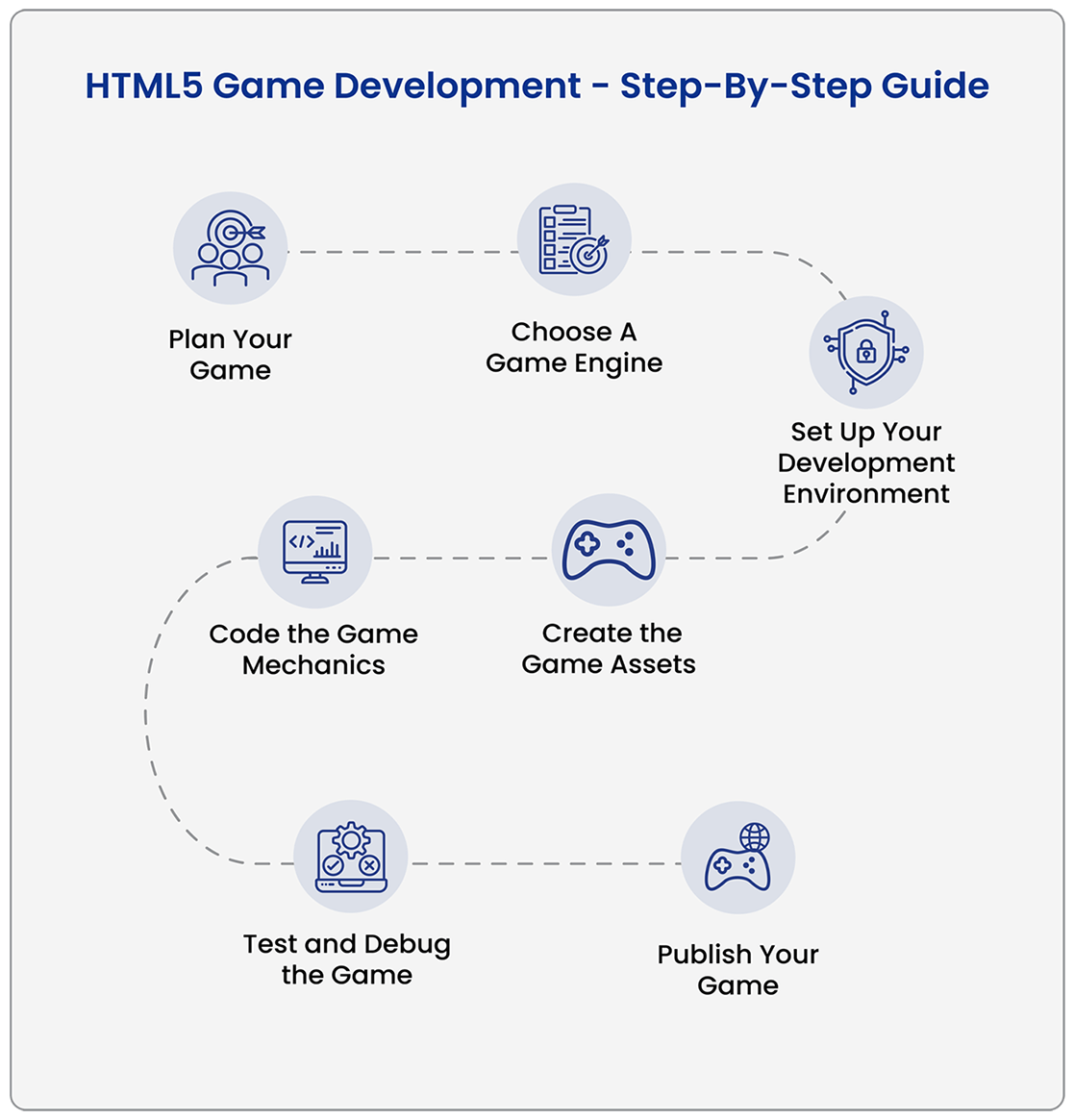
Step 1: Plan Your Game
Before you begin developing an HTML5 game, you need have a clear idea of what you want to build. Begin by generating ideas for your game’s premise, story, mechanics, and art style. When you have a general idea of what you want to make, you may start working on the details, such as the stages, characters, and gameplay.
Step 2: Choose A Game Engine
There are various game engines available for creating HTML5 games. Phaser, Construct 2, and Unity are some popular game engines. Each game engine has its own set of advantages and disadvantages, so select the one that best meets your requirements. (Read more about Comparing Game Development Engines: Unity vs Unreal Engine)
HTML 5 Game Development Company

Step 3: Set Up Your Development Environment
After you’ve decided on a game engine, you’ll need to set up your development environment. Installing the game engine software, as well as any other tools or plugins, may be required.
Step 4: Create the Game Assets
The following stage is to develop game assets such as characters, backdrops, and sound effects. You can either build these assets yourself with a graphics editor or use pre-made assets found online.
Step 5: Code the Game Mechanics
Begin coding the game mechanics in your preferred game engine. This could include generating game objects, configuring the physics engine, and writing the game logic.
Step 6: Test and Debug the Game
It is critical to test and debug your game after you have coded the game mechanics. To guarantee that your game runs properly, test it on several devices and browsers. Repair any faults or mistakes discovered during the testing process.
Explore our other insights!
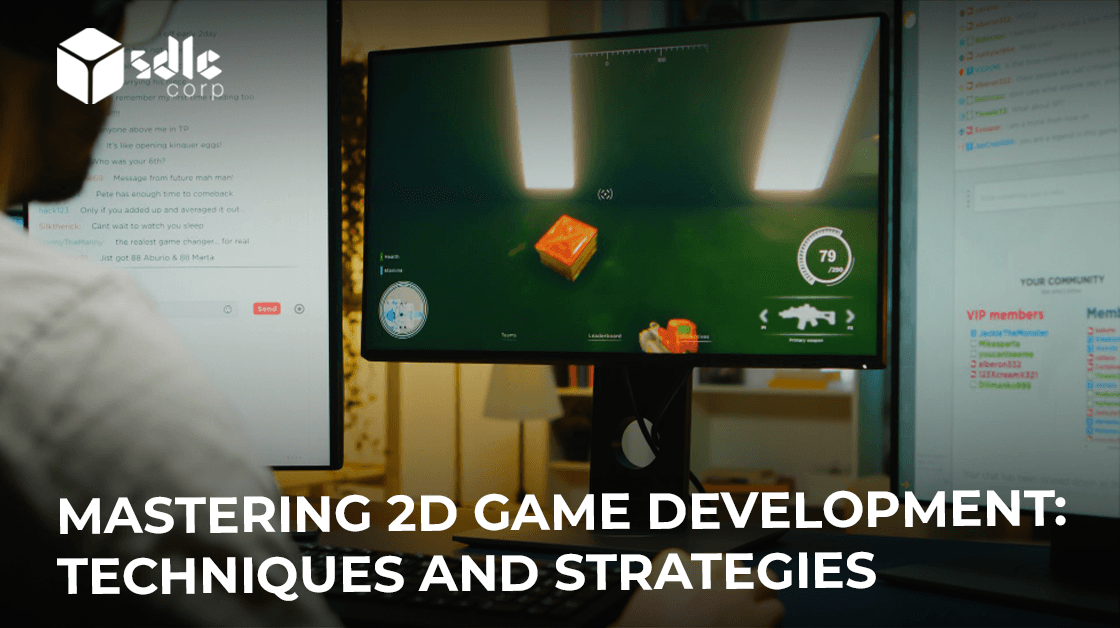
Mastering 2D Game Development: Techniques and Strategies
MASTERING 2D GAME DEVELOPMENT : TECHNIQUES AND STRATEGIES 2D game development is an art form that involves talent,

Indiana Jones and the Great Circle coming to PS5: What we know so far
https://sdlccorp-web-prod.blr1.digitaloceanspaces.com/wp-content/uploads/2024/09/videogameCTA3.png” alt=”videogameCTA3″ width=”400″ height=”400″> Conclusion ndiana Jones and the Great Circle is shaping up to be one

Top Android Games for Competitive eSports
https://sdlccorp-web-prod.blr1.digitaloceanspaces.com/wp-content/uploads/2024/09/Android-Games-for-Competitive-eSports-3-1-2048×1152.webp 2048w” sizes=”(max-width: 2560px) 100vw, 2560px”> 7. Arena of Valor – MOBA eSports at Its Finest What
Step 7: Publish Your Game
When your game is finished, it’s time to publish it. You may either publish your game on your own website or upload it to online game portals like Kongregate or Newgrounds. Make sure to market your game on social media and other platforms to attract a broader audience.

HTML5 Games
Angry Birds
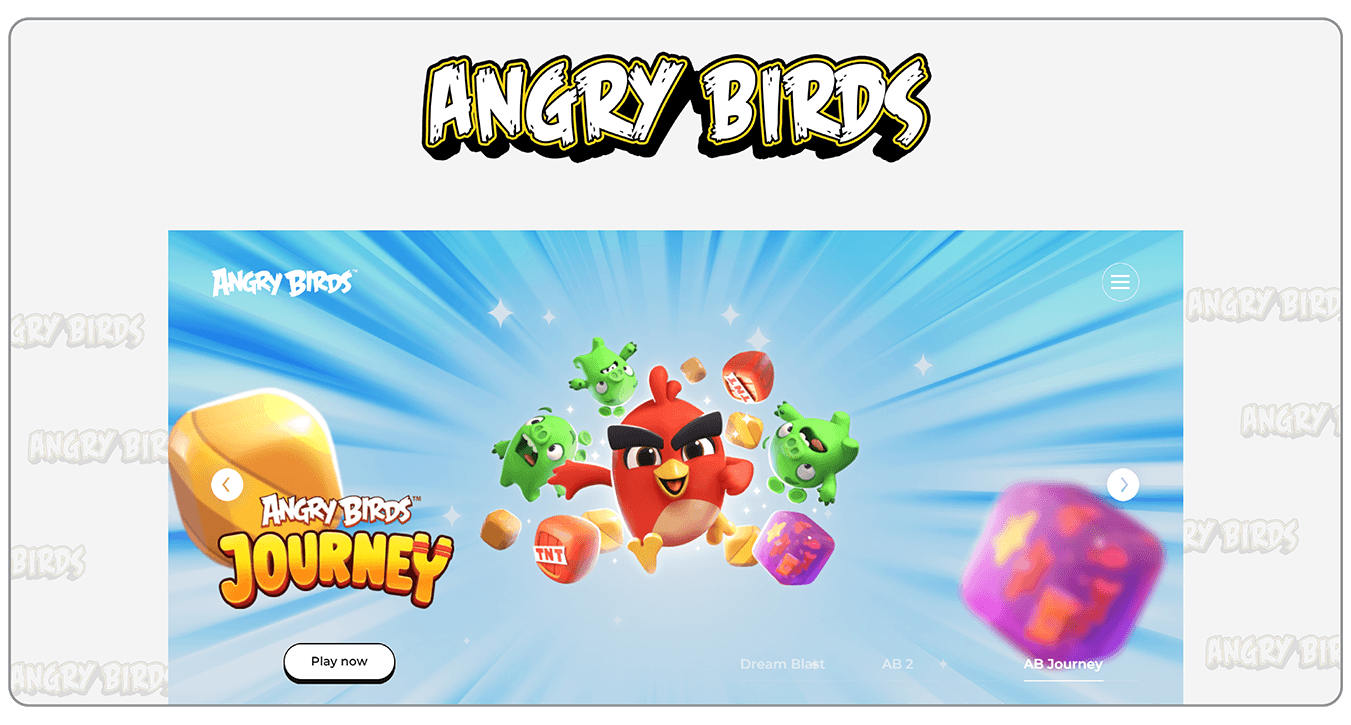
One of the most loved mobile games ever, Angry Birds was built utilizing HTML5 game development. Rovio Entertainment created the game, which was published in December 2009. The player must utilise a catapult to throw birds at pigs in order to exterminate all of the pigs on each level. The HTML5 canvas element was used to construct the game, which allows developers to generate intricate images and animations. Box2D, an open-source physics engine that can be utilised with HTML5, was used as the game’s physics engine.
Cut the Rope
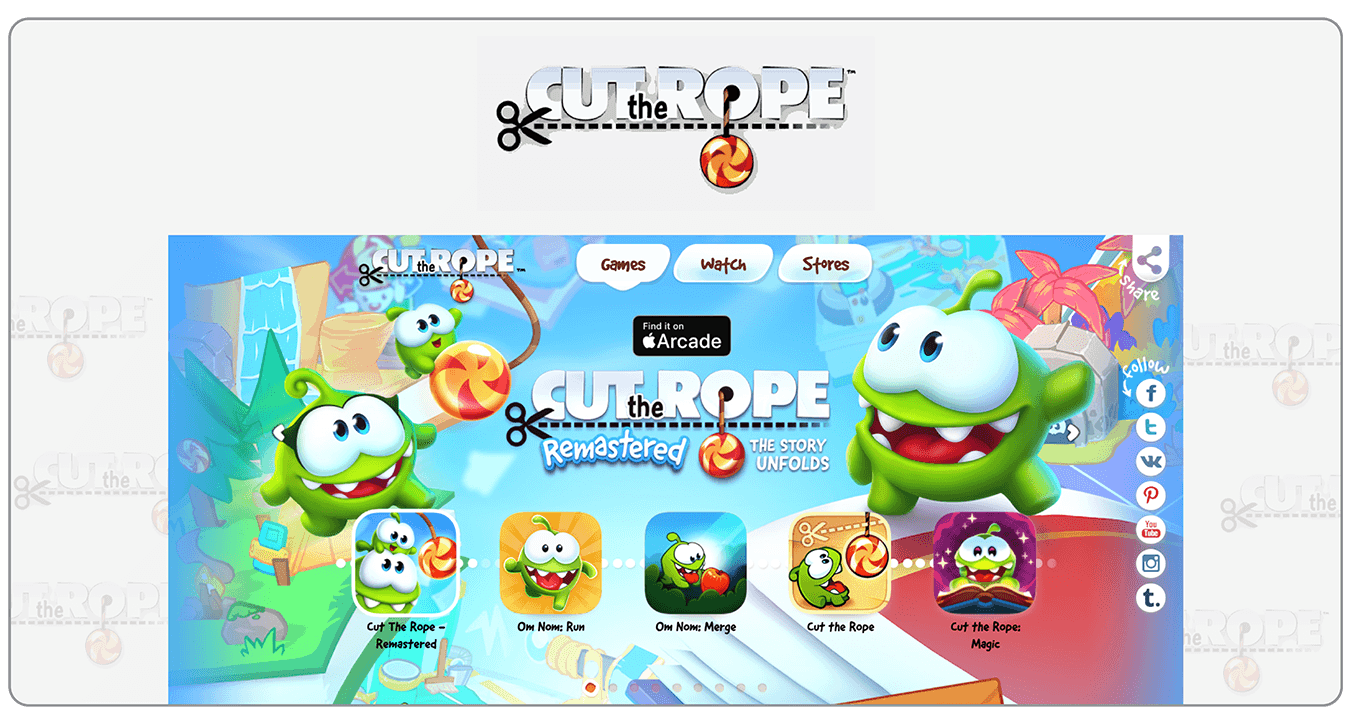
Another popular mobile game made with HTML5 game development is Cut the Rope. ZeptoLab created the game, which was launched in October 2010. In the game, the player must cut ropes in order to feed candy to Om Nom, a small green monster. The HTML5 canvas element was used, as well as the JavaScript library EaselJS, which provides a simple interface for interacting with the canvas element.
Crossy Road
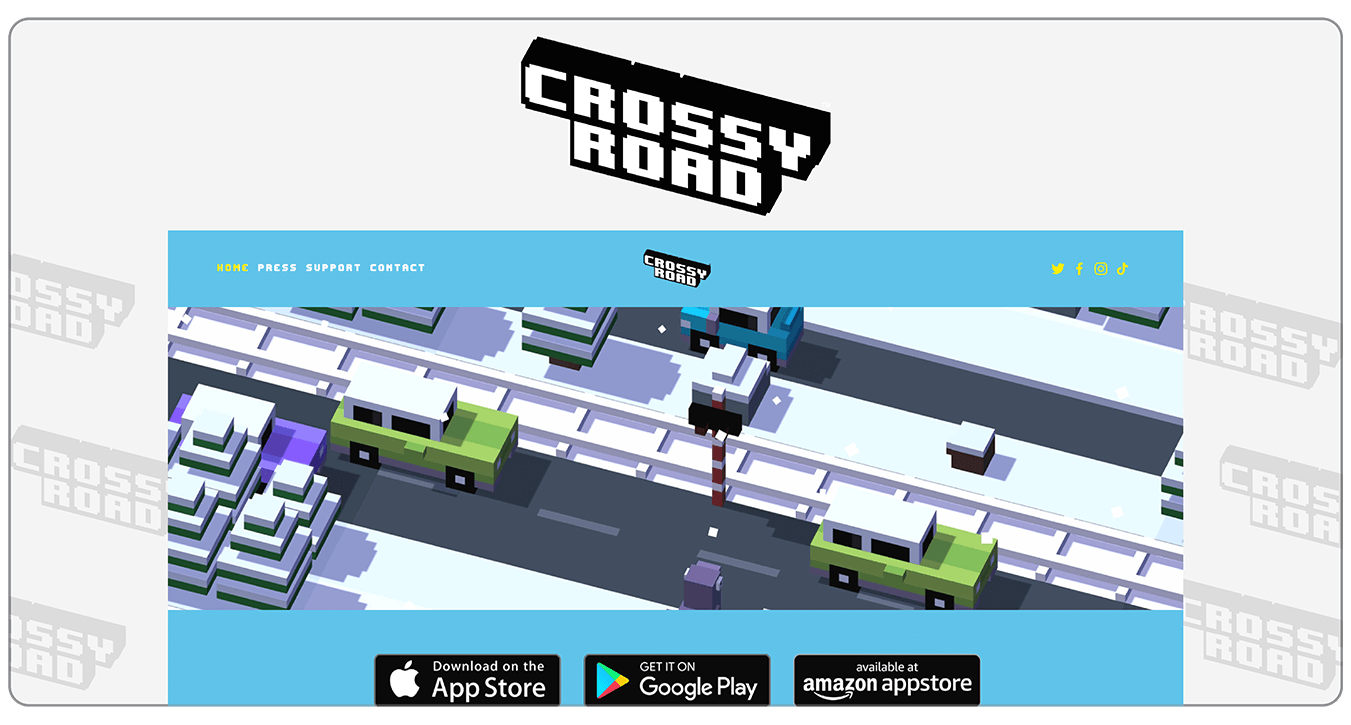
Crossy Road is a popular mobile game that was developed utilising HTML5 game development. Hipster Whale created the game, which was launched in November 2014. The player must steer a figure across a succession of busy roadways while avoiding hazards and earning cash. The game was created with the help of the HTML5 canvas element and the JavaScript library Phaser, which provides a foundation for creating HTML5 games.
Bejeweled
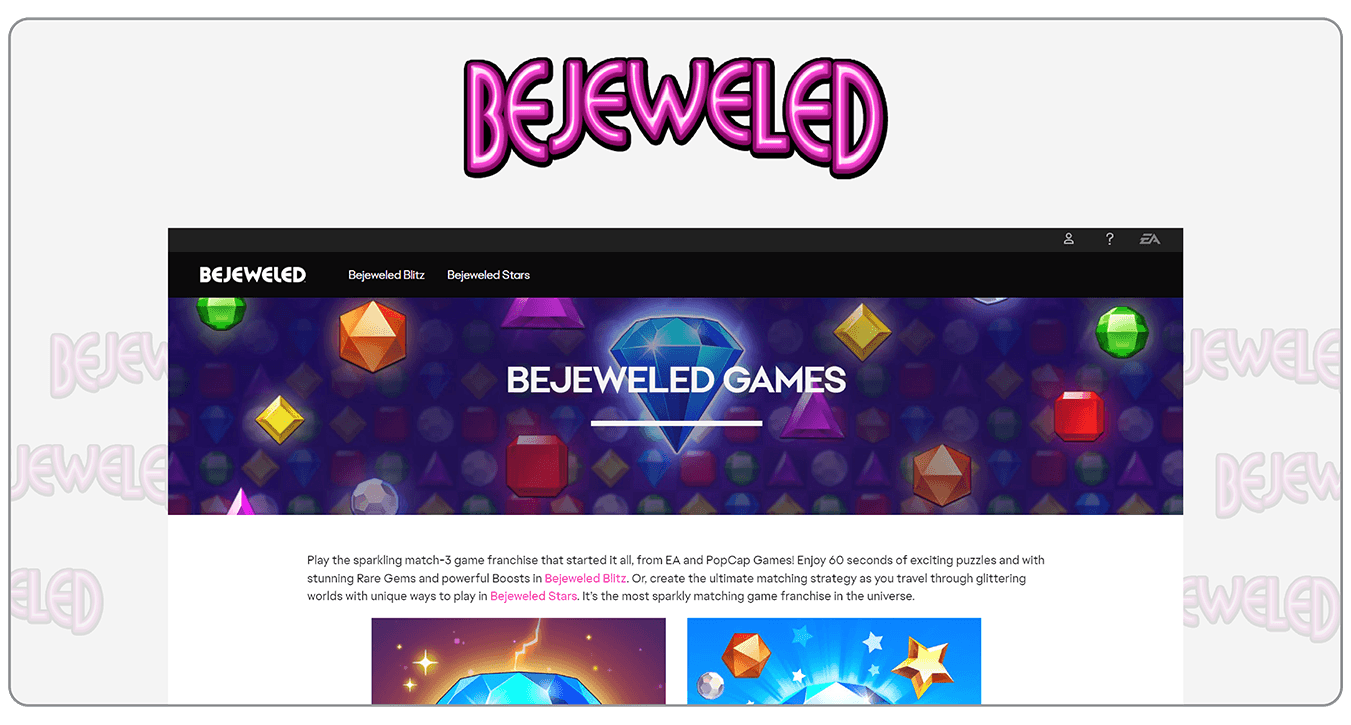
Bejeweled is a classic puzzle game that was first introduced in 2001 but has since been modified and offered for a variety of platforms, including mobile devices. PopCap Games designed the game using HTML5 game development techniques. In order to build a line of three or more gems of the same hue, the player must swap adjacent gems. The game was created with the HTML5 canvas element and the JavaScript library CreateJS, which offers a set of tools for creating HTML5 games.
Developers often employ HTML5, CSS3, and JavaScript, as well as numerous libraries and frameworks, to create these games. HTML5 serves as the backbone for the game’s user interface, while CSS3 styles the interface and adds visual effects. The game’s logic and functionality, such as receiving user input and changing the game’s state, are created using JavaScript. EaselJS, Phaser, and CreateJS, for example, provide additional capabilities such as an easy interface for dealing with the canvas element or a framework for constructing HTML5 games.
Overall, HTML5 game creation provides a strong and adaptable platform for producing games that can be played on a variety of devices ranging from desktop PCs to mobile devices. Developers may create fascinating and enjoyable games that are accessible to a wide audience with the correct skills and resources.
Level Up: Create Stunning Games with HTML5 Today!

HTML5 Vs. Adobe Flash
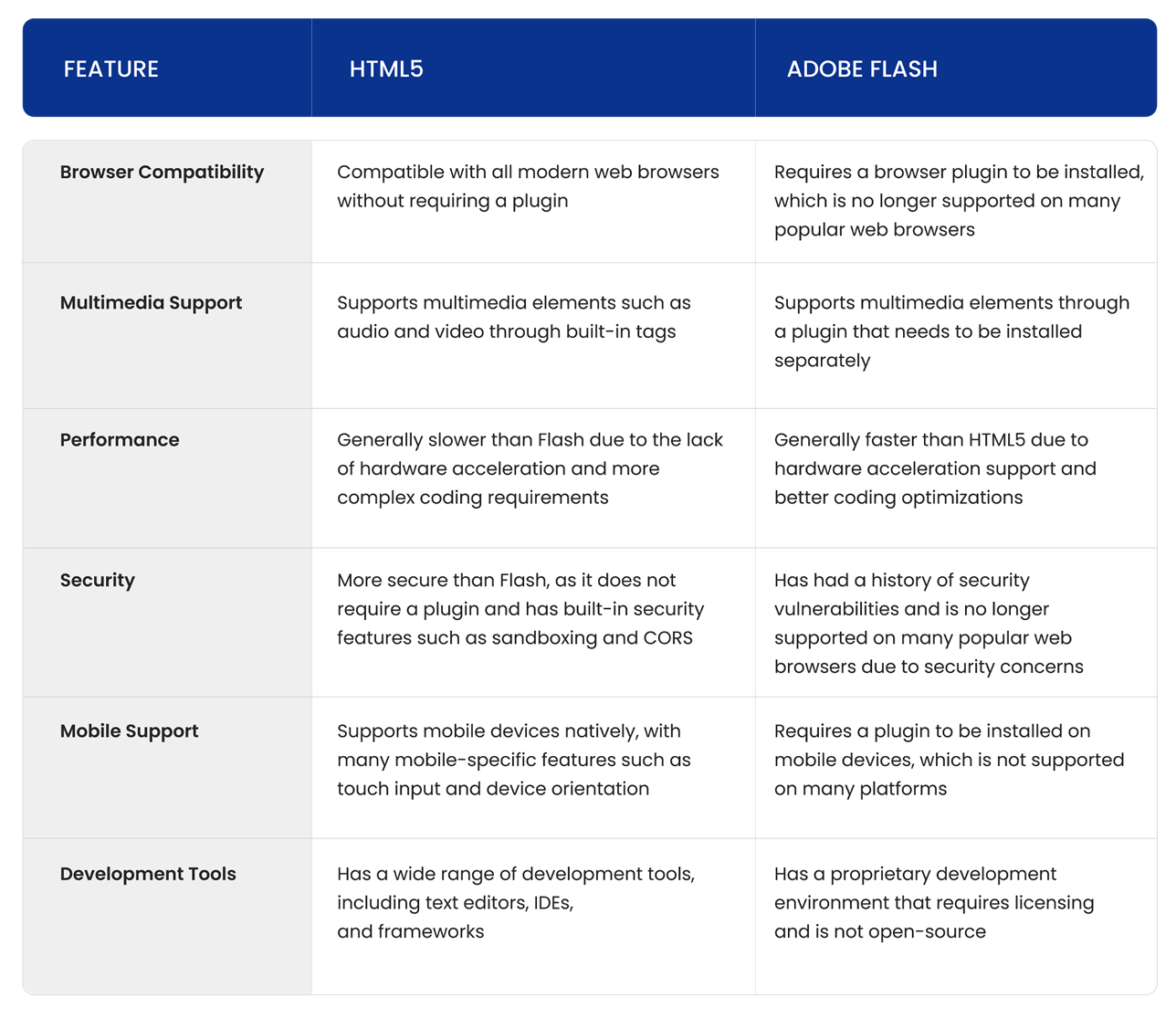
Conclusion
Subsequently because of its ease of use, cross-platform compatibility, and ability to produce magnificent games with rich graphics and engrossing gameplay, HTML5 game creation has become a popular alternative for game makers. HTML5 game creation is predicted to expand in popularity as mobile gaming becomes more popular and there is a greater need for high-quality web-based games. Game creation frameworks and tools like Phaser, CreateJS, and Construct have made it easier than ever for developers to create HTML5 games. The ability to integrate web technologies such as CSS, JavaScript, and SVG visuals in HTML5 game development has expanded game developers’ options. Overall, HTML5 game creation has a bright future for developers who want to develop visually appealing games that can be played on a variety of devices and platforms.
FAQs
1. What is HTML5 game development, and how is it different from traditional game development?
The process of generating games using web technologies such as HTML5, CSS, and JavaScript is known as HTML5 game development. It differs from traditional game production in that it does not necessitate the use of proprietary game engines or development environments, and games may be played on various devices and platforms.
2. What are some popular game development frameworks and engines for HTML5 game development?
Phaser, CreateJS, and Construct are some prominent game creation frameworks and engines for HTML5 game development. These frameworks give developers a plethora of tools and features for developing visually attractive games, such as physics engines, animation tools, and game object libraries.
3. What are the few advantages of using HTML5 for game development?
One of the primary benefits of adopting HTML5 for game production is that it is cross-platform compatible, allowing games to be played on a variety of devices and platforms. Furthermore, as compared to traditional game creation, HTML5 game development is quite simple to learn and does not necessitate expensive development environments or licencing fees.
4. Can HTML5 games compete with native games in terms of graphics and performance?
Yes, thanks to developments in web technologies and hardware acceleration, HTML5 games can compete with native games in terms of graphics and speed. However, the performance of HTML5 games might vary depending on the game’s complexity and the device being used.
5. How can I get started with HTML5 game development?
To get started with HTML5 game development, you should first study HTML5, CSS, and JavaScript, which are the essential technologies used. You can also look at famous game development frameworks and engines like Phaser, CreateJS, and Construct, which provide developers a variety of tools and capabilities for developing visually amazing games.

